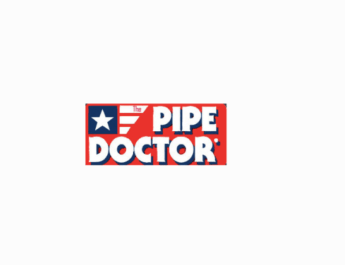Selling used products effectively depends on selecting the right platform that aligns with your goals and the type of items you are selling. Different platforms offer unique features, audiences, and benefits. This comprehensive guide will help you navigate the top platforms for selling used products, detailing their strengths and ideal use cases.
1. Online Marketplaces
1.1. eBay
Features:
- Auction and Fixed Price: eBay offers both auction-style and fixed-price listings, allowing flexibility in how you sell your items.
- Wide Audience: Access to a global audience, increasing the chances of finding buyers for a variety of products.
- Buyer Protection: eBay provides buyer protection programs, which can increase buyer confidence.
Best For:
- High-Demand Items: Electronics, collectibles, fashion, and items with a broad market.
- Niche Products: Rare or unique items that might attract bidders.
Pros:
- Large user base and high visibility.
- Auction option can drive up prices for high-demand items.
Cons:
- Listing fees and final value fees can reduce profit margins.
- Competition with other sellers.
1.2. Amazon
Features:
- Fulfillment by Amazon (FBA): Option to use Amazon’s fulfillment services for shipping and customer service.
- Wide Reach: Access to a massive audience and established trust with buyers.
- Listing Tools: User-friendly tools for listing and managing products.
Best For:
- Books, Electronics, and Household Items: Items with strong demand and high visibility.
- Newer Used Items: Products in excellent condition or recent models.
Pros:
- Large, trusted platform with high traffic.
- Convenient fulfillment options with FBA.
Cons:
- Listing fees and FBA fees.
- Competitive market with many sellers.
1.3. Facebook Marketplace
Features:
- Local Sales: Focus on local transactions, making it easier to sell large items without shipping.
- Integration with Facebook: Leverages your social network for increased visibility.
- No Fees: Generally free to list items and complete transactions.
Best For:
- Local Sales: Furniture, appliances, and bulky items.
- Quick Sales: Items you want to sell quickly within your local community.
Pros:
- No listing fees or shipping hassles for local transactions.
- Easy communication through Facebook Messenger.
Cons:
- Limited to local buyers unless you opt for shipping options.
- Less protection compared to other platforms.
2. Specialized Platforms
2.1. Poshmark
Features:
- Fashion Focus: Specializes in selling new and used fashion items.
- Social Features: Integrated social network for sharing and promoting listings.
- Seller Tools: Tools for creating appealing listings and managing sales.
Best For:
- Clothing, Accessories, and Shoes: Items in good condition that are in style or on-trend.
- Fashion Enthusiasts: Sellers who have a passion for fashion and style.
Pros:
- Dedicated fashion audience.
- Easy-to-use platform with social engagement features.
Cons:
- Fees on sales (e.g., shipping and transaction fees).
- Limited to fashion and accessories.
2.2. Reverb
Features:
- Music Gear Focus: Specializes in musical instruments and audio equipment.
- Expert Audience: Attracts buyers who are specifically interested in music gear.
- Detailed Listings: Options for detailed descriptions and high-quality images.
Best For:
- Musical Instruments and Gear: Guitars, keyboards, and studio equipment.
- Musicians and Audio Professionals: Targeted audience with specific interests.
Pros:
- Niche market with targeted buyers.
- Expert tools for listing and managing gear.
Cons:
- Niche focus may limit audience for non-music items.
- Fees for listing and selling.
3. Local Classifieds
3.1. Craigslist
Features:
- Local Transactions: Focus on local buying and selling, avoiding shipping and long-distance communication.
- Free Listings: Generally free to post ads and connect with buyers.
- Varied Categories: Covers a wide range of product categories.
Best For:
- Large Items: Furniture, appliances, and other bulky items.
- Quick, Local Sales: Items you want to sell quickly within your local area.
Pros:
- Free to use with no listing fees.
- Direct, local sales with cash transactions.
Cons:
- Potential safety concerns with in-person meetings.
- Less structured than some online platforms.
3.2. OfferUp
Features:
- Local Focus: Similar to Craigslist, focusing on local transactions.
- Mobile-Friendly: Easy-to-use app with integrated messaging and payment options.
- User Ratings: Rating system for buyers and sellers to build trust.
Best For:
- Local and Smaller Items: Electronics, furniture, and household goods.
- Convenience: Sellers who prefer a mobile app experience.
Pros:
- User-friendly app with local reach.
- Integrated messaging and payment features.
Cons:
- Limited to local transactions.
- Competition with other sellers in the area.
Conclusion
Choosing the best platform to sell used products depends on various factors, including the type of product, your target audience, and your preferences for transaction methods. Online marketplaces like eBay and Amazon offer broad reach and diverse audiences, while specialized platforms like Poshmark and Reverb cater to specific niches. Local classifieds and platforms like Facebook Marketplace and OfferUp provide convenience for local sales and avoid shipping hassles.
Evaluate your needs, consider the features and costs of each platform, and select the one that aligns best with your selling goals. With the right platform, you can maximize your profit and achieve successful sales for your used products.



